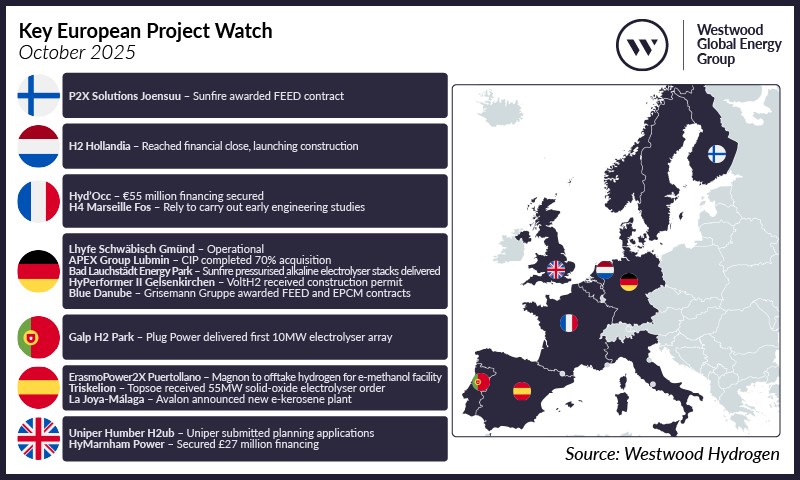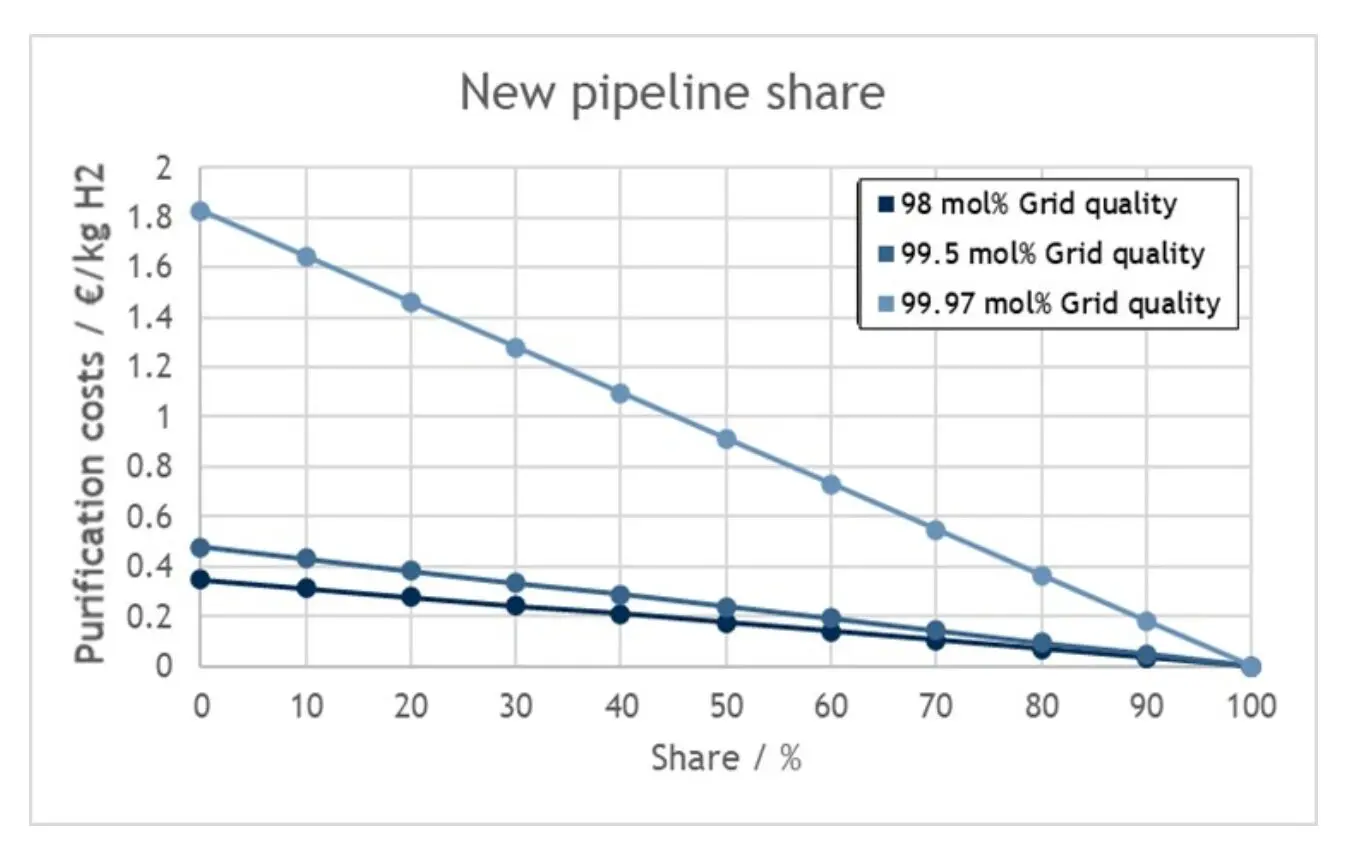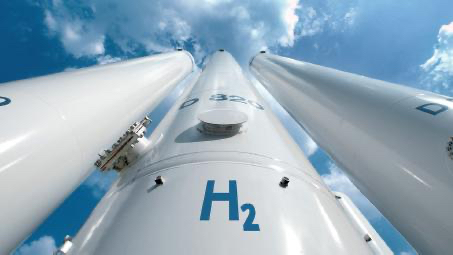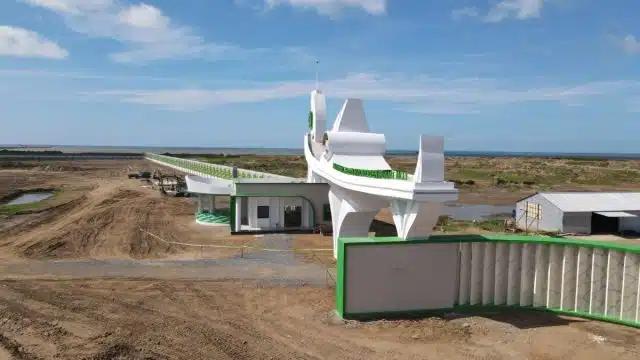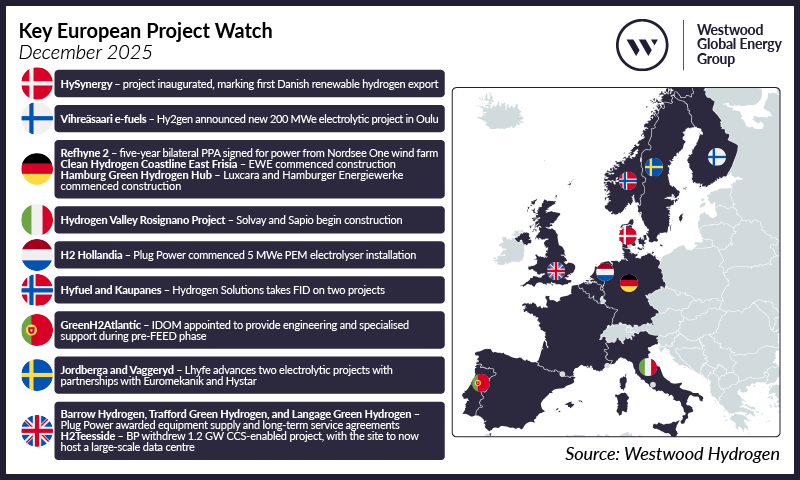
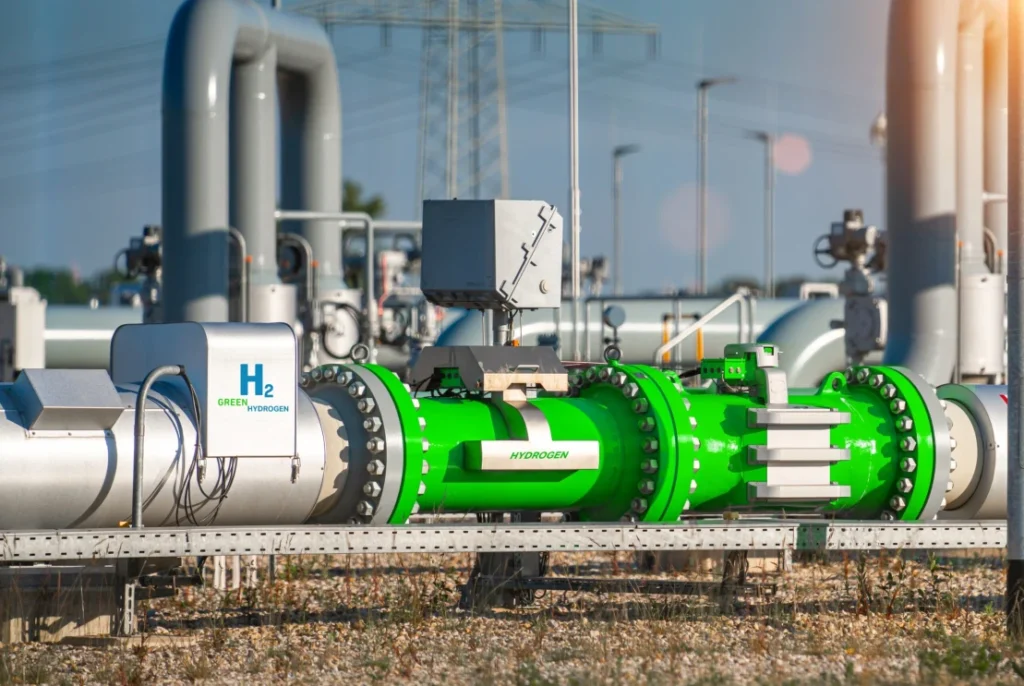
Installed electrolysis capacity in the EU could reach 0.7 GW by the end of the year, if all proposed projects materialise on time, the IEA said in its annual global hydrogen review. However, this would fall short of the 2024 target of 6 GW set out in the EU Hydrogen Strategy established in 2020.
In Europe, nearly 8m tonnes/year of green hydrogen could be generated via electrolysis by 2030, the report found, though this could fall to just over 5m tonnes/year if projects at very early stages of development are excluded.
This growth would be led by Spain (20%), Denmark (12%) and Germany (10%), it forecast.
Obstacles to operation
But the risk of green hydrogen projects being cancelled remains high on a global level, the IEA said. It cited obstacles such as unclear demand signals, financing hurdles, lack of incentives, regulatory uncertainties, licensing and permitting issues, as well as operational difficulties.
The agency welcomed measures such as carbon contracts for difference in Germany and the ReFuelEU Aviation mandates in 2023.
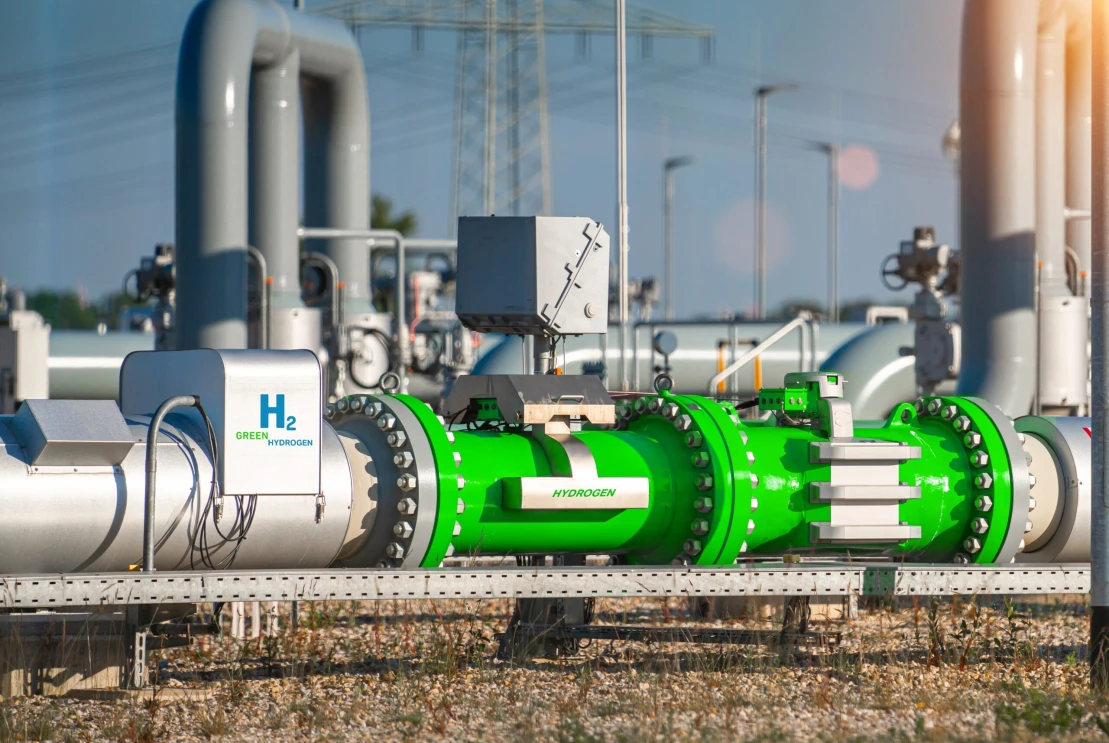
Photo: Audio und werbung/Shutterstock.com
But it said the scale of such measures remained insufficient, reiterating calls for governments to put in place adequate policies to stimulate demand in key sectors, such as heavy industry, refining and long-distance transport.
Globally, green hydrogen capacity could reach 49m tonnes/year by 2030 based on announced projects.
China remains the global frontrunner, accounting for 80% of the capacity coming into operation in 2023.
Overall demand for all forms of hydrogen on a global level reached 97m tonnes in 2023, up 2.5% year on year.
Source: Fatima Sadouki, MONTEL




